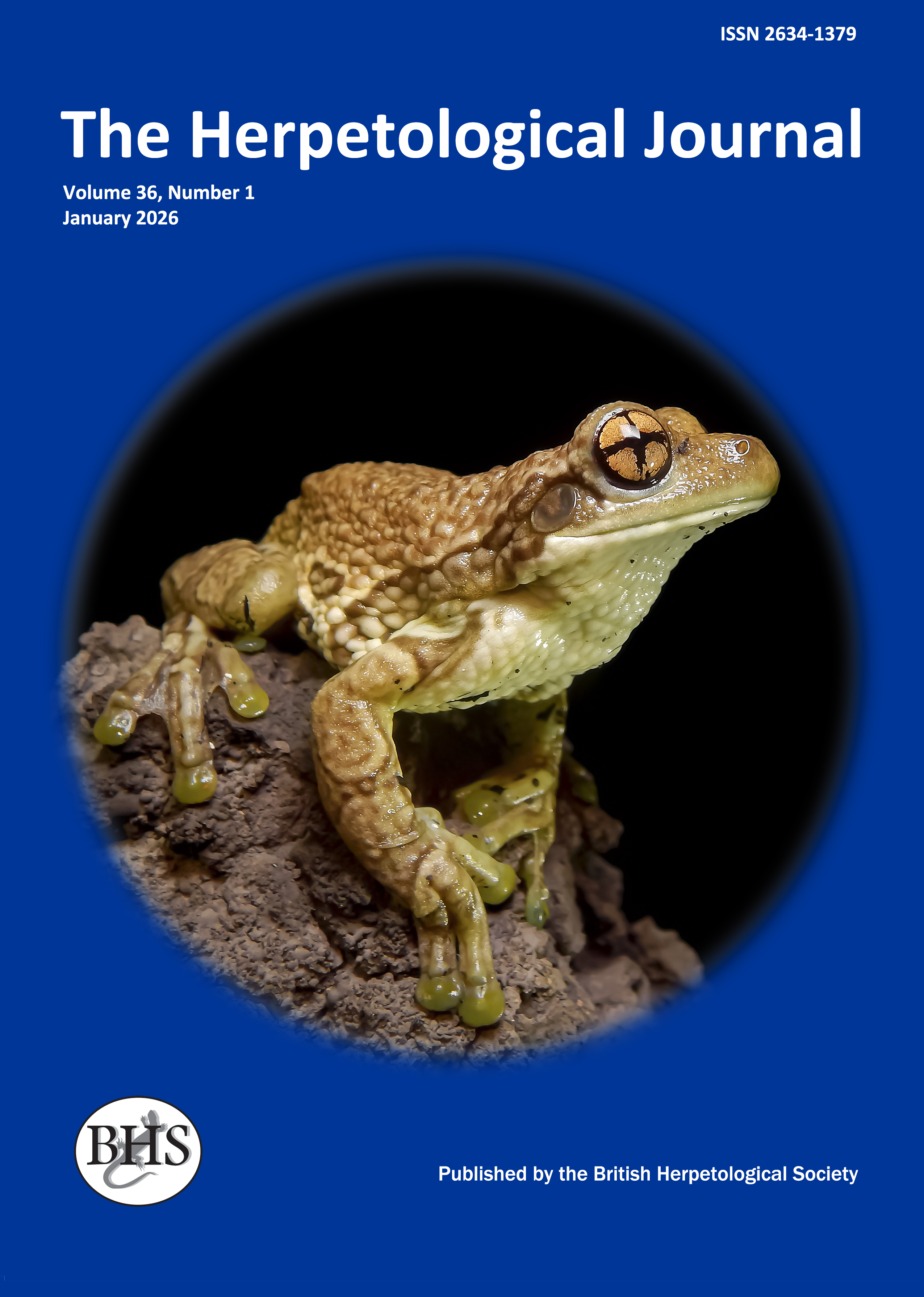
The Herpetological Journal
The Herpetological Journal is the Society's prestigious quarterly scientific journal. Articles are listed in Biological Abstracts, Current Awareness in Biological Sciences,Current Contents, Science Citation Index, and Zoological Record.
ISSN 0268-0130
2023 Impact Factor for the Herpetological Journal is 1.1, with the Journal sitting just below Quartile 2 in Zoology, at percentile 46.9
pdf 05. Baby snakes: maternal investment and neonate sexing in smooth snakes
28 downloads
Subscription / purchase required
DOI: https://doi.org/10.33256/35.3.216225
pp. 216-225
Authors: Domin Dalessi, Henk Siepel & Eelke Jongejans
Abstract: Observed sex ratios of adult smooth snakes Coronella austriaca vary widely across studies, raising the question whether this species shows skewed sex ratios already at birth, and whether this depends on the condition of the mother. A total of 15 gravid females were caught and kept in captivity to give birth. We measured and weighed these females before and after parturition, as well as each of their offspring. DNA was collected from each individual. Neonate sex was identified using multiple methods, allowing us to compare the accuracy of the conventional approach (total-to-tail length ratio) and hemipenal eversion (or 'popping') with the results of molecular analysis. Based on the 107 offspring, we found that hemipenal eversion did not lead to the same sex identification as DNA analysis in 3.6% of the cases, while the conventional approach disagreed in 8.3% of the cases. Given the high level of expertise and risk involved with the eversion technique, we recommend using the conventional method to identify the sex of neonates, augmented with DNA analyses for intermediate length ratios, between 5.32 and 5.68. Females lost on average 44.0% of their weight at parturition, with heavier females giving birth to more or heavier offspring. Individual neonate weight was positively related to the weight of their mothers, but negatively with the number of siblings. While neonate sex ratios varied strongly among mothers, the overall male to female ratio in this study was 1:0.91. The skewed sex ratios observed in the field (female-biased in summer: 1:3.44, male-biased in spring and autumn: 1:0.57) are therefore most likely due to sex-specific behaviour and resulting detection probabilities changing over the seasons, and potentially by sex-specific survival rates.
Keywords: Coronella austriaca, CTNNB1, hemipenal eversion, offspring, sex ratio, WAC

